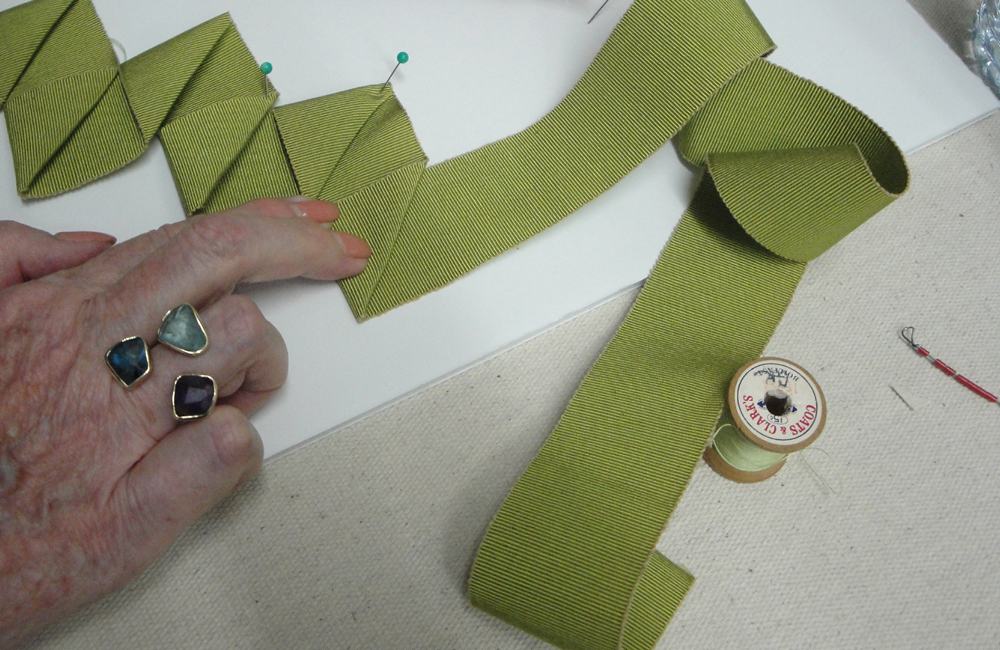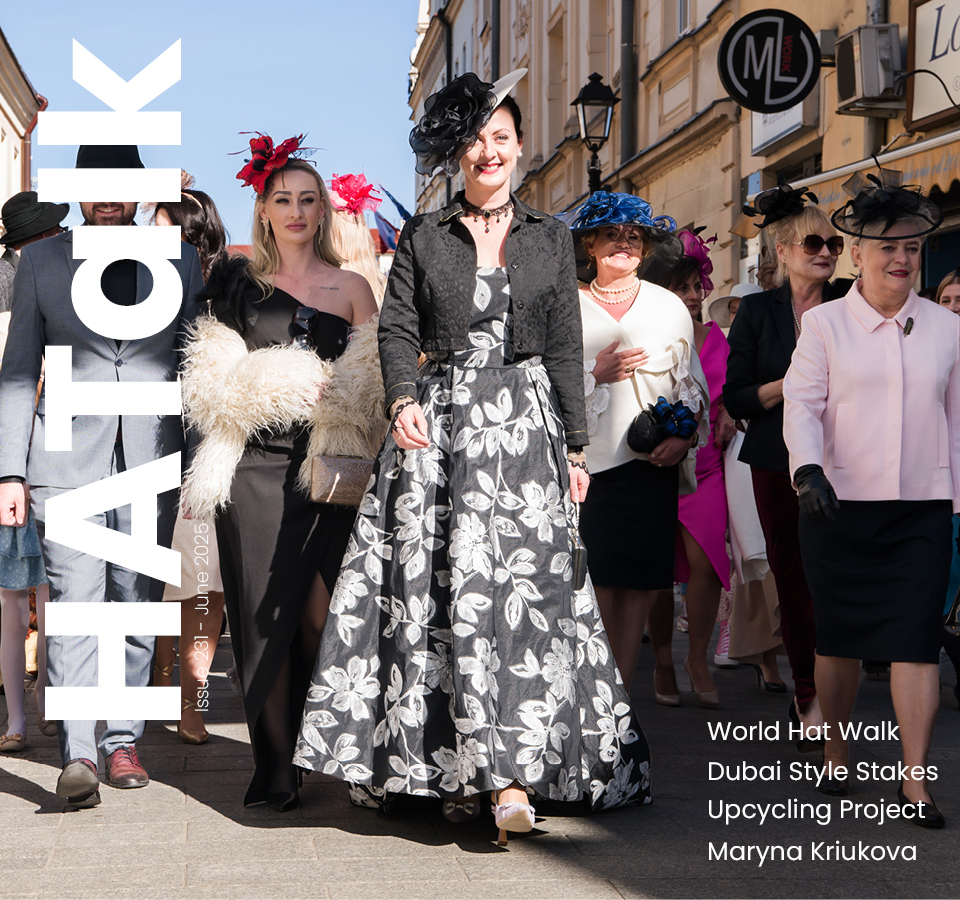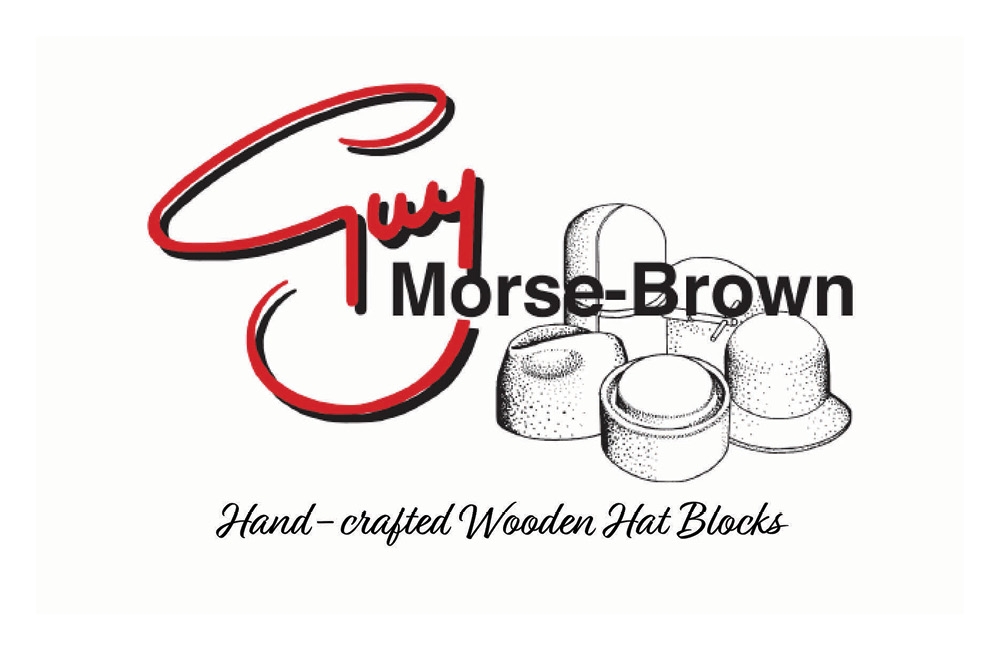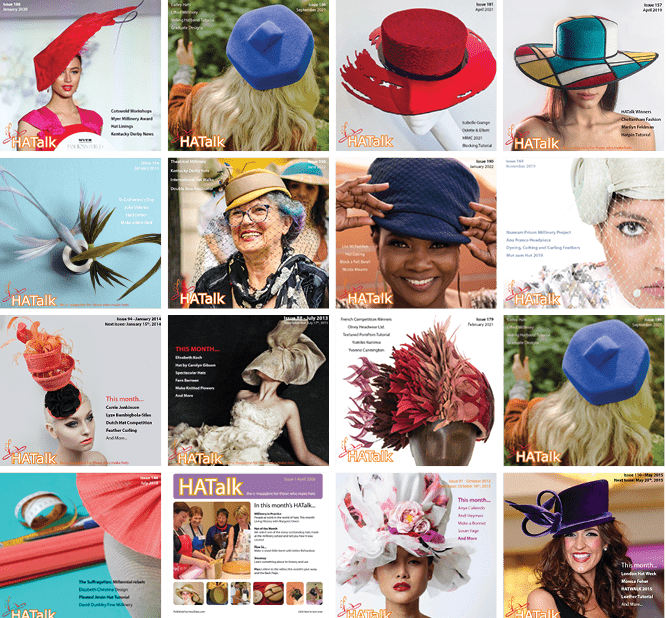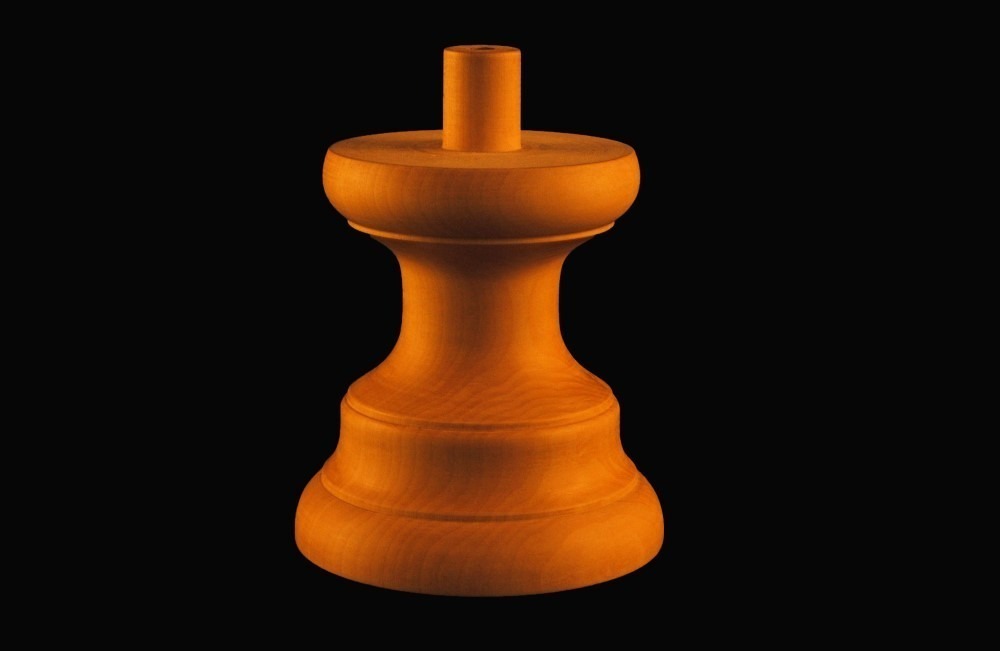Blog / Leather for Making Hats
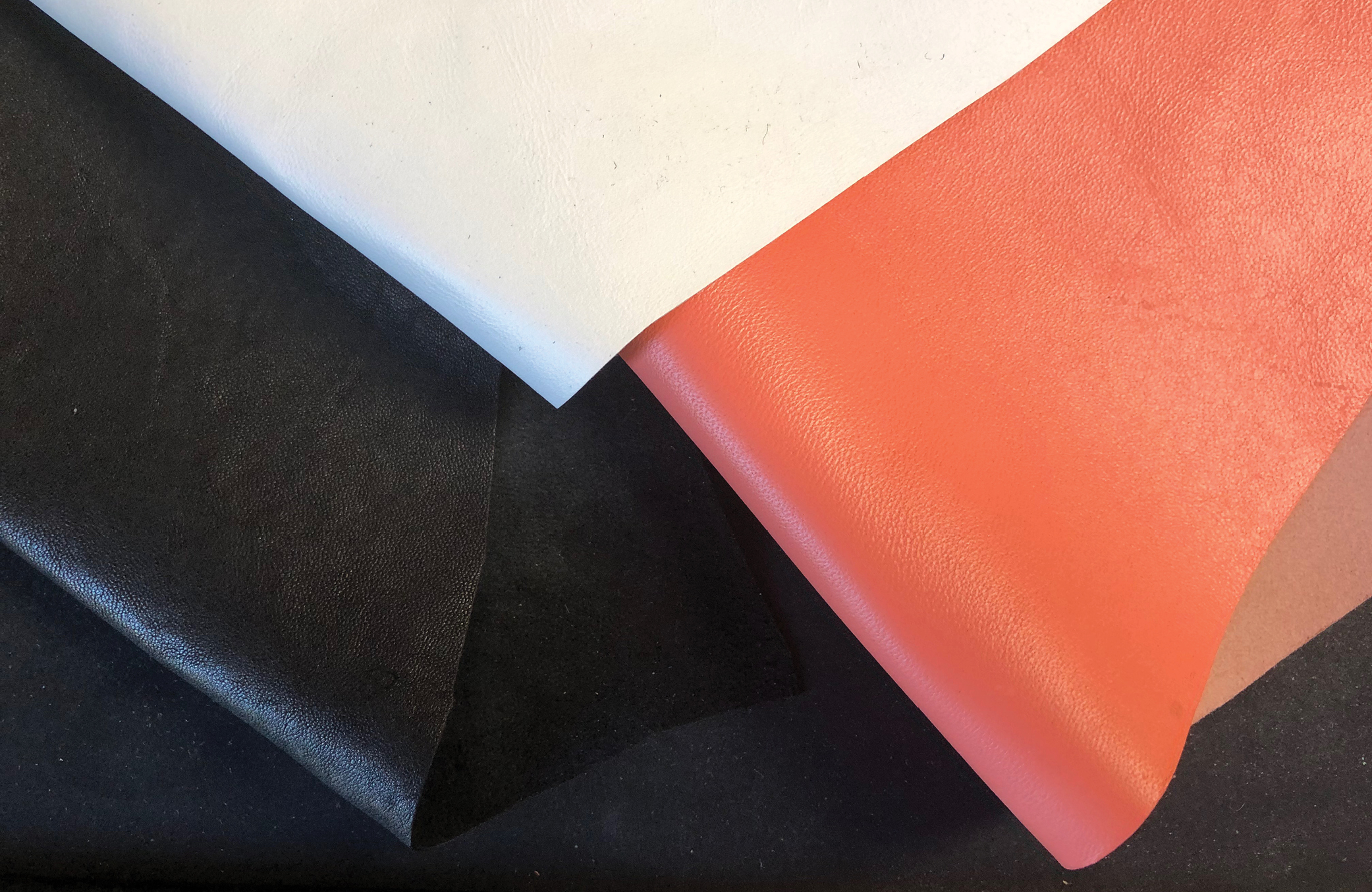
Leather for Making Hats
Choosing Leather for Millinery and Flower Making
Leather is a durable and flexible material that can be used for a variety of millinery applications, from blocking hat shapes to making flowers and trims. Because different types of leather are used for different products, it is helpful to learn about the types of leather available. Leather can be expensive, so understanding the qualities you are looking for in a piece of leather can keep you from spending money on materials that you don’t need.
Type & Grade
Leather is the tanned skin or hide from a variety of animals. It can be purchased from specialist leather suppliers. If you don’t live in a large city, you may have to purchase your leather pieces online from specialist suppliers like Walter Reginald in London. You can also repurpose old leather coats or clothing to create recycled hats and headpieces.
The most common leathers used in millinery come from lamb, goat, fish, and pig. These skins are naturally thinner to start with, so lend themselves well to the stretching and shaping involved in millinery. Each type of leather will have a different amount of stretch. Even within a single piece of leather, you can have varying amounts of stretch, so you always want to pull and test your leather before blocking to find the best part to use for your project.
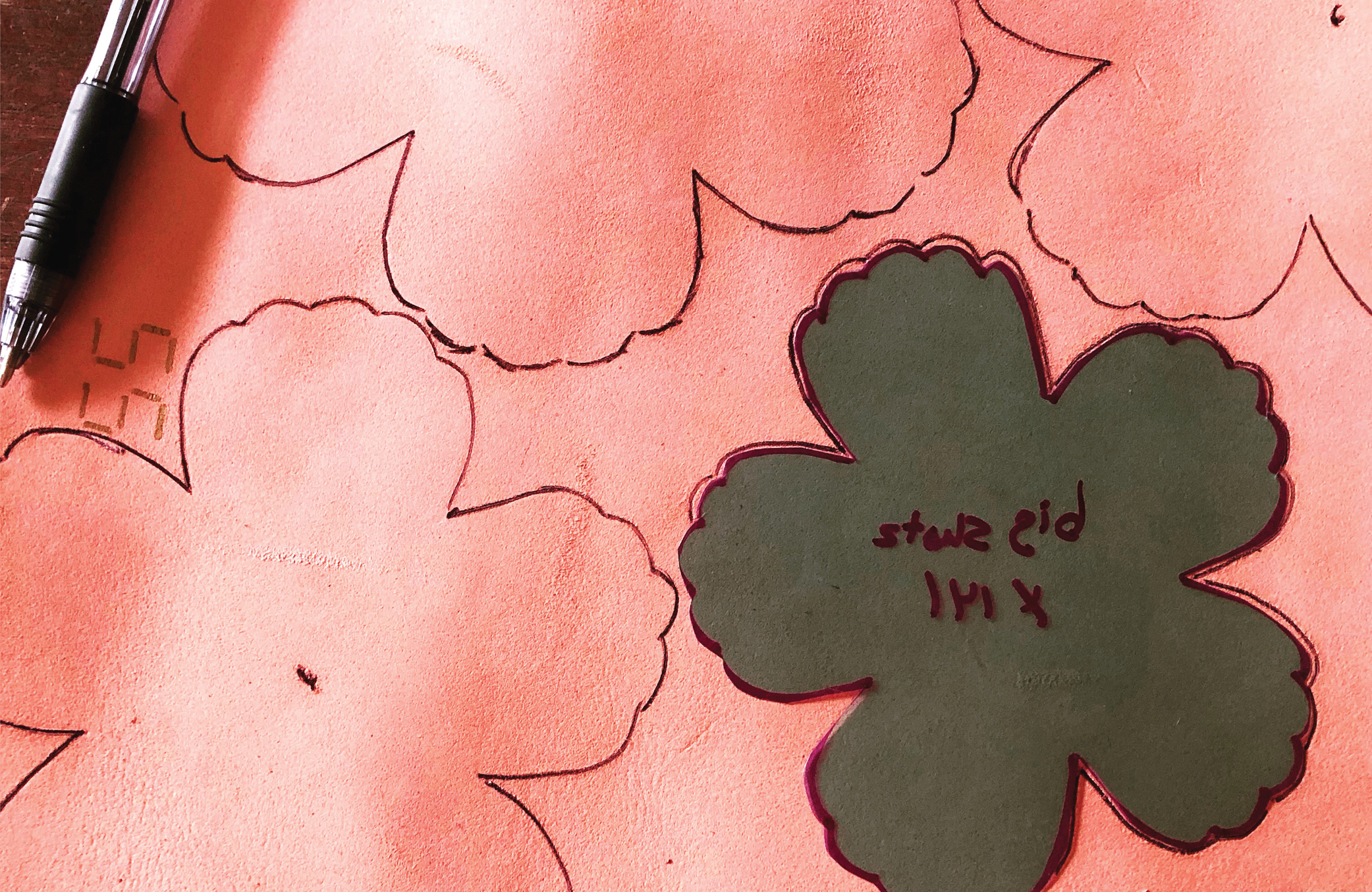
Leather is graded – A, B, C and Utility – based on the number of scars or blemishes on the hide. Leather is a natural product, so there will be some imperfections in every piece. A-Grade will only have a couple of flaws, while lower grades will have an increasing number per sheet (and will also be more affordable). For many millinery purposes, especially flower making, a B-Grade leather is suitable as the flaws can be worked around.
Stretch & Thickness
You need to be able to stretch and shape the leather with water and steam, so water solubility is important. Leather is a natural product, so it is dyeable, which is especially useful for making flowers. The tanning and finishing processes used in leather making can both affect the leather’s solubility. Look for aniline dyed leathers, as these are treated with soluble dyes instead of being coated with an insoluble pigment or paint. Vegetable dyed leathers will also work well. This process uses natural materials to treat the hide, so it is an eco-friendly process. The most common tanning method uses chrome, which takes less time, but leaves the leather with an insoluble finish. Vegetable tanned leather is noticeably easier to sculpt and shape with just a little water.
You also need to be aware of the thickness of the leather you are buying, as this will affect its ability to stretch. If you are blocking leather you will have a little more flexibility with the thickness, but for getting the fine details of flower making right, a skin of .4mm-.8mm is best.
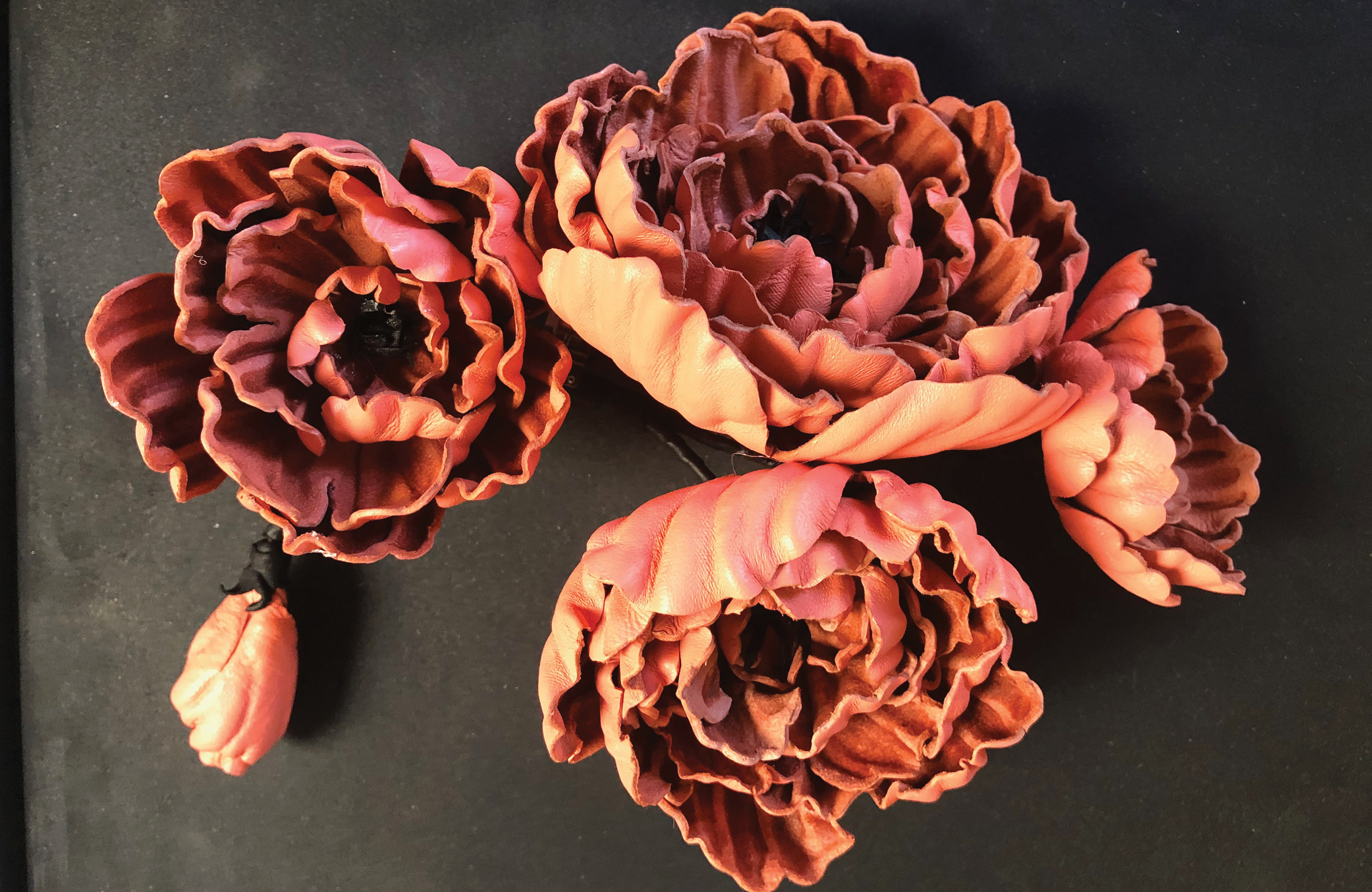
Shopping for leather can be confusing, as you will also find leather referred to in ounces or inches. This measurement refers to the thickness by weight. The chart below lists some common weights and conversions that might be useful as you look for leather for making hats and flowers.
Leather Weights and Conversions
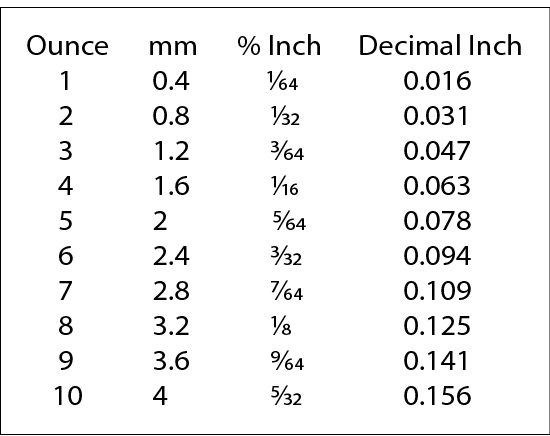
Creating with Leather
Leather is durable and fun to work with and will elevate your designs. Having some knowledge of the processes involved in its manufacture will help you make smarter purchasing decisions. If you want to learn how to make your own hats and flowers out of leather, try one of these tutorials from the HATalk Project Library.
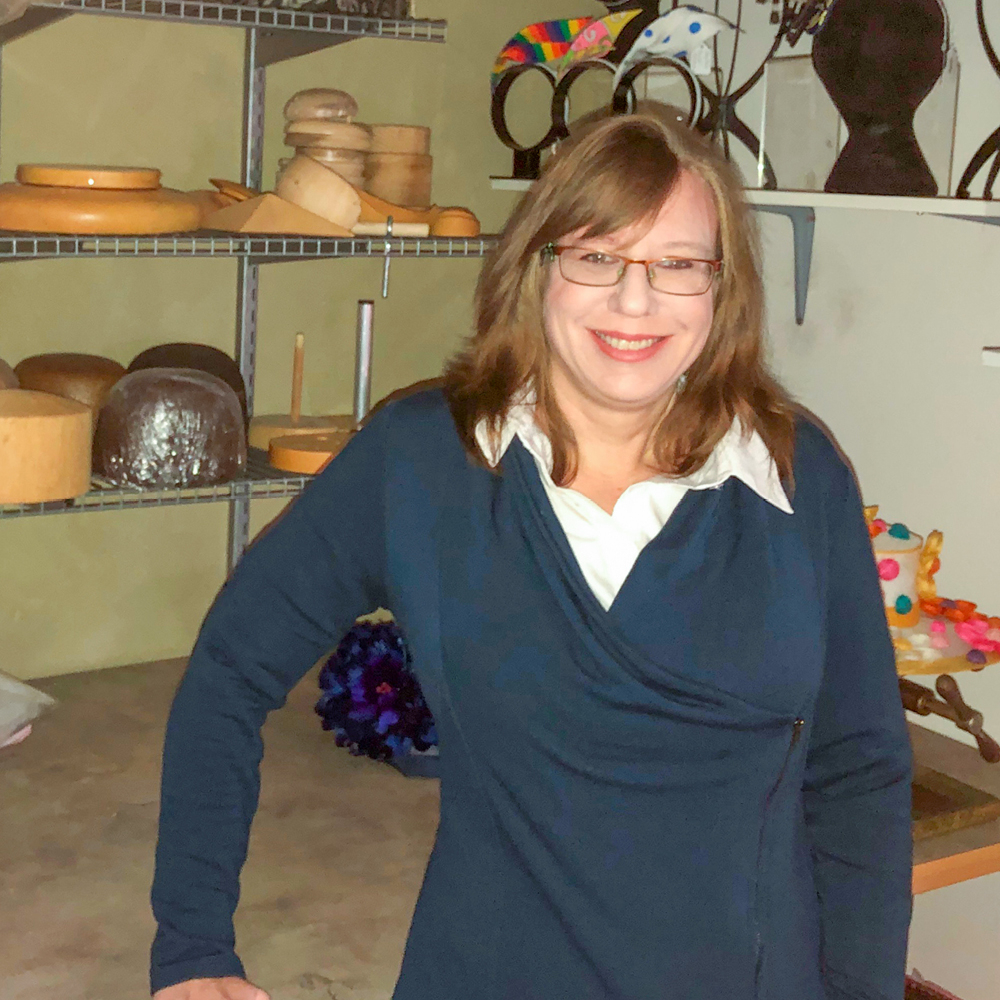
About the Author
Amy Fowler is the creator of the bespoke, California-based Millinery by Amy Fowler label. She also runs Humboldt Haberdashery, an online millinery supplier.
See Amy’s full bio HERE.
Popular Articles
Latest e-Magazine
Featured Supplier

Leather for Making Hats
Choosing Leather for Millinery and Flower Making
Leather is a durable and flexible material that can be used for a variety of millinery applications, from blocking hat shapes to making flowers and trims. Because different types of leather are used for different products, it is helpful to learn about the types of leather available. Leather can be expensive, so understanding the qualities you are looking for in a piece of leather can keep you from spending money on materials that you don’t need.
Type & Grade
Leather is the tanned skin or hide from a variety of animals. It can be purchased from specialist leather suppliers. If you don’t live in a large city, you may have to purchase your leather pieces online from specialist suppliers like Walter Reginald in London. You can also repurpose old leather coats or clothing to create recycled hats and headpieces.
The most common leathers used in millinery come from lamb, goat, fish, and pig. These skins are naturally thinner to start with, so lend themselves well to the stretching and shaping involved in millinery. Each type of leather will have a different amount of stretch. Even within a single piece of leather, you can have varying amounts of stretch, so you always want to pull and test your leather before blocking to find the best part to use for your project.

Leather is graded – A, B, C and Utility – based on the number of scars or blemishes on the hide. Leather is a natural product, so there will be some imperfections in every piece. A-Grade will only have a couple of flaws, while lower grades will have an increasing number per sheet (and will also be more affordable). For many millinery purposes, especially flower making, a B-Grade leather is suitable as the flaws can be worked around.
Stretch & Thickness
You need to be able to stretch and shape the leather with water and steam, so water solubility is important. Leather is a natural product, so it is dyeable, which is especially useful for making flowers. The tanning and finishing processes used in leather making can both affect the leather’s solubility. Look for aniline dyed leathers, as these are treated with soluble dyes instead of being coated with an insoluble pigment or paint. Vegetable dyed leathers will also work well. This process uses natural materials to treat the hide, so it is an eco-friendly process. The most common tanning method uses chrome, which takes less time, but leaves the leather with an insoluble finish. Vegetable tanned leather is noticeably easier to sculpt and shape with just a little water.
You also need to be aware of the thickness of the leather you are buying, as this will affect its ability to stretch. If you are blocking leather you will have a little more flexibility with the thickness, but for getting the fine details of flower making right, a skin of .4mm-.8mm is best.

Shopping for leather can be confusing, as you will also find leather referred to in ounces or inches. This measurement refers to the thickness by weight. The chart below lists some common weights and conversions that might be useful as you look for leather for making hats and flowers.
Leather Weights and Conversions

Creating with Leather
Leather is durable and fun to work with and will elevate your designs. Having some knowledge of the processes involved in its manufacture will help you make smarter purchasing decisions. If you want to learn how to make your own hats and flowers out of leather, try one of these tutorials from the HATalk Project Library.

About the Author
Amy Fowler is the creator of the bespoke, California-based Millinery by Amy Fowler label. She also runs Humboldt Haberdashery, an online millinery supplier.
See Amy’s full bio HERE.
